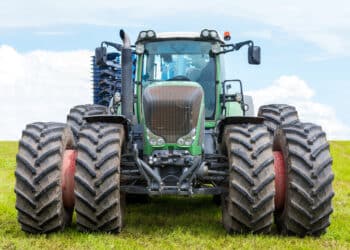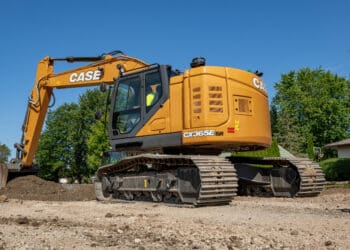Farm lenders face tight conditions headed into 2026
Nearly 80% of Midwest farm lenders reported YoY drops in farm income
Farm lenders continue to experience tight finance conditions as soft commodity prices and cautious equipment demand sets the stage for a subdued 2026, with both lenders and OEMs bracing for continued pressure across the ag economy.
Farm incomes declined for the third straight year, with nearly 80% of lenders reporting year-over-year drops as weaker commodity prices outweigh strong yields, according to a quarterly survey of about 50 agriculture-focused banks by the Federal Reserve Bank of Minneapolis, Joe Mahon, the regional outreach director, said today during a webinar.
The banks also indicated softer loan repayment rates, higher loan demand, declining interest rates, rising land values, lower cash rents and a generally negative outlook for the remainder of the year, he said. The Minneapolis Fed covers Minnesota, Montana, North Dakota, South Dakota, the Upper Peninsula of Michigan and parts of Wisconsin.
Capital spending concerns
Lenders also reported sharply lower capital spending, flat but weakening household spending, rising loan demand and declining repayment rates, all signs of tightening cash flow despite improving interest rates, Mahon said.
“Rates have been ticking down over the last few years, consistent with the loosening in credit conditions by the Federal Reserve, and we see other interest rates move in tandem,” he said. “Farm interest rates have ticked down from their highs that they reached in 2023 and 2024, but overall, they’re still at pretty elevated levels, so this is good news, but it’s still quite a bit more expensive to finance the purchase of machinery or purchase of land.”
Transactional leasing segments, such as row crop and dairy equipment, require strong asset expertise to anticipate end-of-lease market values and manage residual risk effectively for lenders, but also represent an opportunity amid lower capital spending, Mark Loken, vice president at CoBank Farm Credit Leasing, said during the 2025 Equipment Leasing and Finance Association convention last month.
Lessors “need to develop those relationships to be able to provide that customer a lease,” he said at the time. “There’s an opportunity in the industry, if you’re compelled to finance land, cash flow or working capital. It gets a lot more complicated after that, and so maybe not the best place to start.”
Market outlook
Lenders are pessimistic about the fourth quarter, with 83% expecting income declines and predicting that prolonged financial pressure will soon weigh on capital spending and farm household spending, Mahon said.
“These lenders are predicting that the prolonged period of low incomes is going to start to bind, and we’re going to start to see falling consumer purchases by farm households as well,” he said. “Maybe not great news for some of the businesses on our main streets across the region — auto dealers and other firms like that that rely on those purchases by farm households and operations outlook for loan demand and other credit conditions is again more of the same.”
Meanwhile, OEM CNH expects 2026 to be a transition year and is tracking orders, trade shifts, commodity prices and other demand indicators as it anticipates global industry retail demand to be flat to slightly down next year, President and Chief Executive Gerrit Marx said during the company’s Nov. 4 earnings call.
“We will continue to produce at our current low levels through the end of 2025 and likely into the beginning of 2026, given continued soft demand,” he said. “Our North American dealers are on pace to achieve our inventory targets for new equipment within the next few months, whereas improving sentiment in Europe will allow dealers to increase their stock somewhat.”
Check out our exclusive industry data here.









